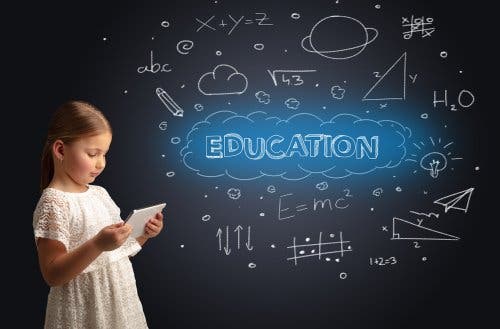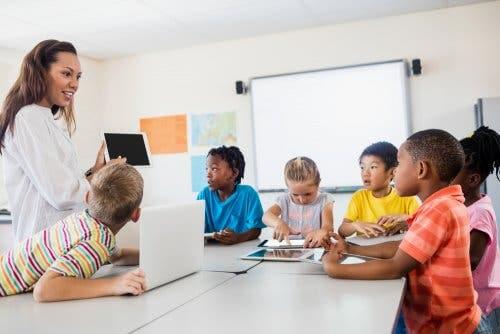All About Progressive Education


Written and verified by the pedagogue and trainer María Matilde
The main characteristic of progressive education was that it was broad and complex and had disparate ideological orientations. In other words, it consisted of various contributions, both theoretical and practical, from different thinkers around the world.
This movement, which first arose in Europe and later spread to other countries in the world, revolutionized education.
A new concept of schools and education
Progressive education arose on the basis of the theoretical precedents established by the Enlightenment, developed by authors such as Rousseau, Pestalozzi, or Frobel. It basically consisted of criticizing the traditional education that existed at the time.
Thus, progressive education arose as a defense and vindication of education in which the student is the main protagonist, attending to their needs and wishes. It postulated that schools should stray away from the traditional conception of formal, authoritarian, and disciplinary education, which considered students passive subjects.

Authors such as Dewey, Piaget, Vigotsky, Cousinet, Ausubel, Ferriere, Montessori, and Freire, among others, greatly contributed to the creation of a new educational concept. This new concept was based on an education primarily designed on the following principles:
- Firstly, understanding childhood as a stage of life governed by particular laws and needs.
- Respect for the student’s personality and freedom.
- Constant interrelation between a practical and manual education with a conceptual education.
- The promotion of group work without any student having to lose their individual character.
- A functional educational action, both from an individual and a social perspective.
- The importance given to symbolic learning for development in social life situations.
- Consideration of people’s individualities regarding their family, cultural, work, and religious context.
- A comprehensive education aimed at an individual’s dimensions, ranging from cognitive and intellectual development, such as emotional and social, and physical and artistic development.
Main contributions of progressive education
Many of the principles of current education stem from breakthroughs that progressive education led to. The consideration of a free, practical, participatory, vital, and democratic education is an important legacy of progressive education, where the spotlight is on the student, their individuality and learning, in accordance with their biological evolution.
Thanks to progressive education, the schools of today shape new types of children and students. Children and students who are able, with the guidance and help of their educators, to become autonomous and responsible people.

Progressive education advocated for an education that doesn’t foster competitiveness but rather cooperation. Our current educational system is based on this idea and competency-based teaching. In other words, learning adequate competencies both for the professional and work world, as well as others associated with the development of a democratic and responsible coexistence.
Therefore, just as in progressive education, the main goal of our current education system is to educate for life.
Conclusion
In short, progressive education contributed a lot to the conception of education and the formation of our current education system.
But we could say that the main legacy to education and pedagogy has been the permanent need to rethink and modify educational practices – above all, to ensure these practices are oriented towards the training of free citizens capable of contributing to an increasingly plural, tolerant, and inclusive society.
The main characteristic of progressive education was that it was broad and complex and had disparate ideological orientations. In other words, it consisted of various contributions, both theoretical and practical, from different thinkers around the world.
This movement, which first arose in Europe and later spread to other countries in the world, revolutionized education.
A new concept of schools and education
Progressive education arose on the basis of the theoretical precedents established by the Enlightenment, developed by authors such as Rousseau, Pestalozzi, or Frobel. It basically consisted of criticizing the traditional education that existed at the time.
Thus, progressive education arose as a defense and vindication of education in which the student is the main protagonist, attending to their needs and wishes. It postulated that schools should stray away from the traditional conception of formal, authoritarian, and disciplinary education, which considered students passive subjects.

Authors such as Dewey, Piaget, Vigotsky, Cousinet, Ausubel, Ferriere, Montessori, and Freire, among others, greatly contributed to the creation of a new educational concept. This new concept was based on an education primarily designed on the following principles:
- Firstly, understanding childhood as a stage of life governed by particular laws and needs.
- Respect for the student’s personality and freedom.
- Constant interrelation between a practical and manual education with a conceptual education.
- The promotion of group work without any student having to lose their individual character.
- A functional educational action, both from an individual and a social perspective.
- The importance given to symbolic learning for development in social life situations.
- Consideration of people’s individualities regarding their family, cultural, work, and religious context.
- A comprehensive education aimed at an individual’s dimensions, ranging from cognitive and intellectual development, such as emotional and social, and physical and artistic development.
Main contributions of progressive education
Many of the principles of current education stem from breakthroughs that progressive education led to. The consideration of a free, practical, participatory, vital, and democratic education is an important legacy of progressive education, where the spotlight is on the student, their individuality and learning, in accordance with their biological evolution.
Thanks to progressive education, the schools of today shape new types of children and students. Children and students who are able, with the guidance and help of their educators, to become autonomous and responsible people.

Progressive education advocated for an education that doesn’t foster competitiveness but rather cooperation. Our current educational system is based on this idea and competency-based teaching. In other words, learning adequate competencies both for the professional and work world, as well as others associated with the development of a democratic and responsible coexistence.
Therefore, just as in progressive education, the main goal of our current education system is to educate for life.
Conclusion
In short, progressive education contributed a lot to the conception of education and the formation of our current education system.
But we could say that the main legacy to education and pedagogy has been the permanent need to rethink and modify educational practices – above all, to ensure these practices are oriented towards the training of free citizens capable of contributing to an increasingly plural, tolerant, and inclusive society.
All cited sources were thoroughly reviewed by our team to ensure their quality, reliability, currency, and validity. The bibliography of this article was considered reliable and of academic or scientific accuracy.
- Narvaez, E. (2006). Una mirada a la escuela nueva. Educere 10 (35). pp. 629-636. Universidad de los Andes. Mérida. Venezuela. Recuperado de https://www.redalyc.org/pdf/356/35603508.pdf
- Guichot, V. (2010). Bases pedagógicas de la Escuela Nueva. En: Historia y perspectiva actual de la educación infantil. Sanchidrián, C., y Ruiz Berrio, J. (coords.). Editoral Graó. Barcelona.
This text is provided for informational purposes only and does not replace consultation with a professional. If in doubt, consult your specialist.








